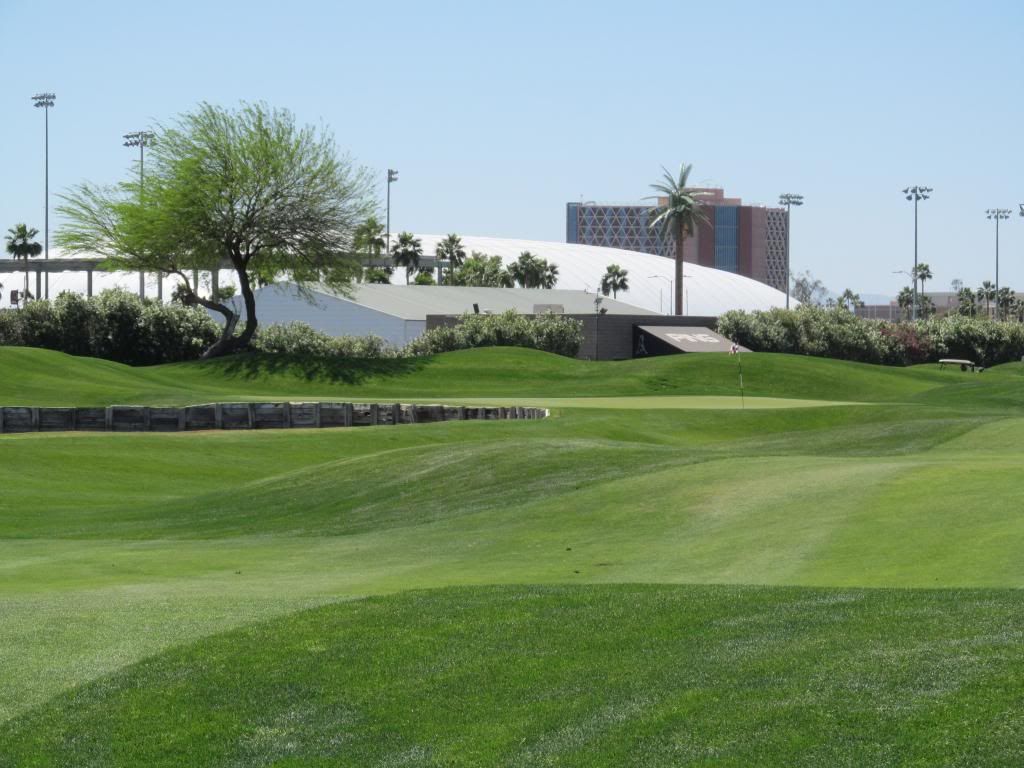Alright, here's the finish ...
#15, par 4. 457/419Playing back down the hill and down wind, this hole does not play quite so long as the card suggests, but it is difficult nonetheless.
You want to drive down the left side to open up the angle of the green. From the fairway, the water right of the green is not visible—but even a first time player probably recalls it’s there based on the view from the tee.
The green is a tabletop, falling off pretty severely on every side. The water is fully ten yards from the right edge of the green, with a small swale in between. You don’t want to miss far enough right to be in the water, but if you just miss, the green slightly right is actually better than left because the swale there is low and you’re chipping back into the slope of the green. Miss way left and you’re in a bunker with a deep swale between you and a green that runs away. Or miss in that deep swale and the ball probably goes to the bottom of an are that fairway cut, so lob or flop shots are very hard, and the green is running away from you.
There’s a lot going on with this hole, including the always odd “lake above much of the surface of the rest of the hole,” but I really like this green. I’ve never seen one quite like it elsewhere.
Tee shot:
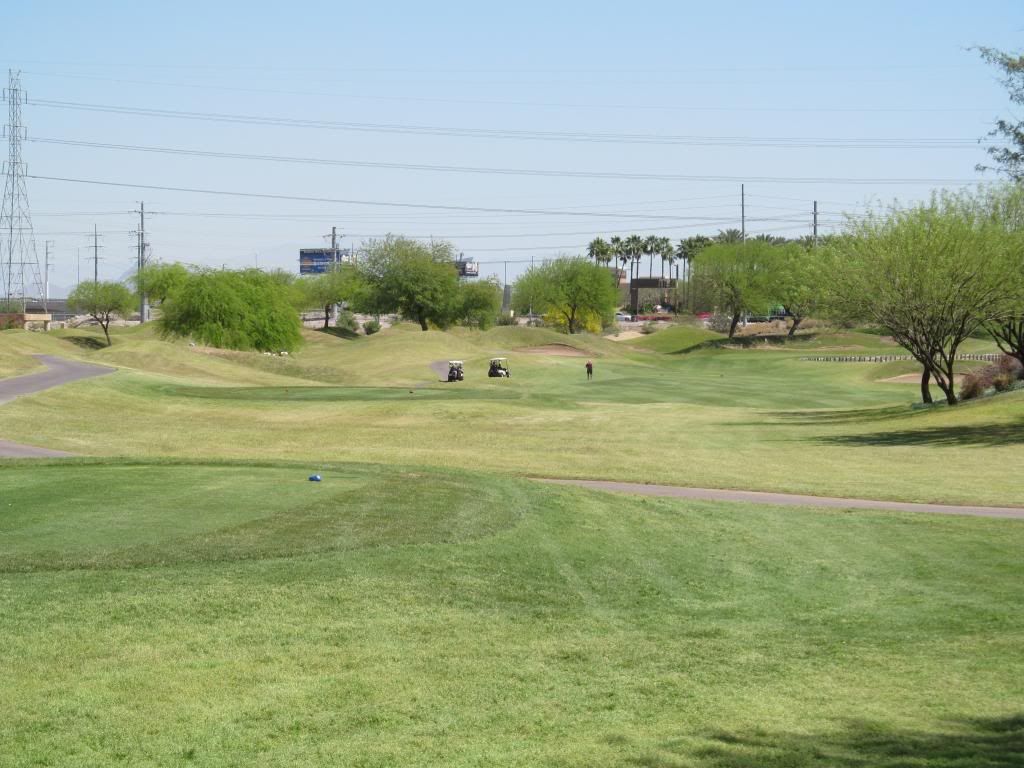
Approach from left side of fairway. Note water not visible.
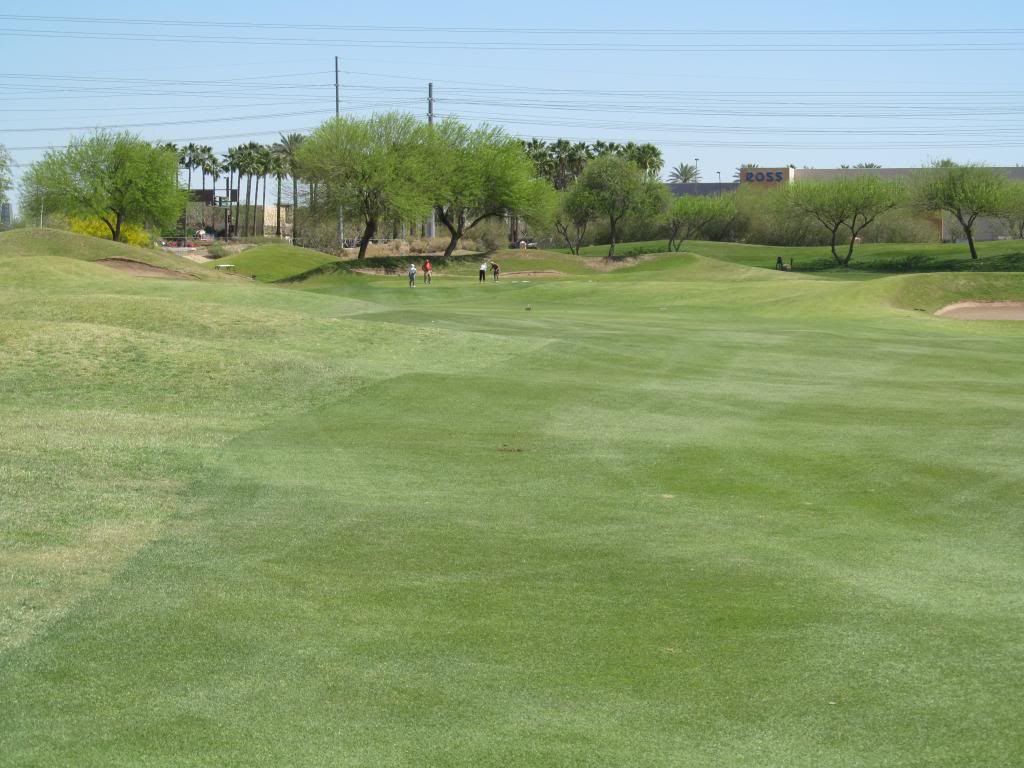
Short of green
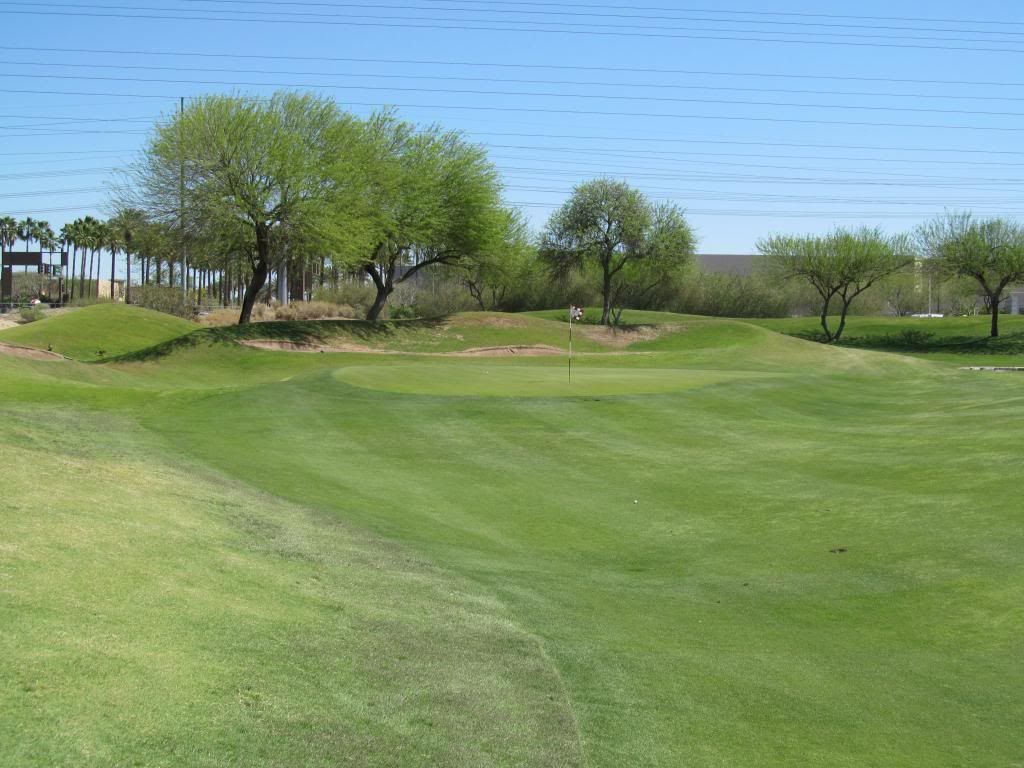
Looking back from 16 tee:
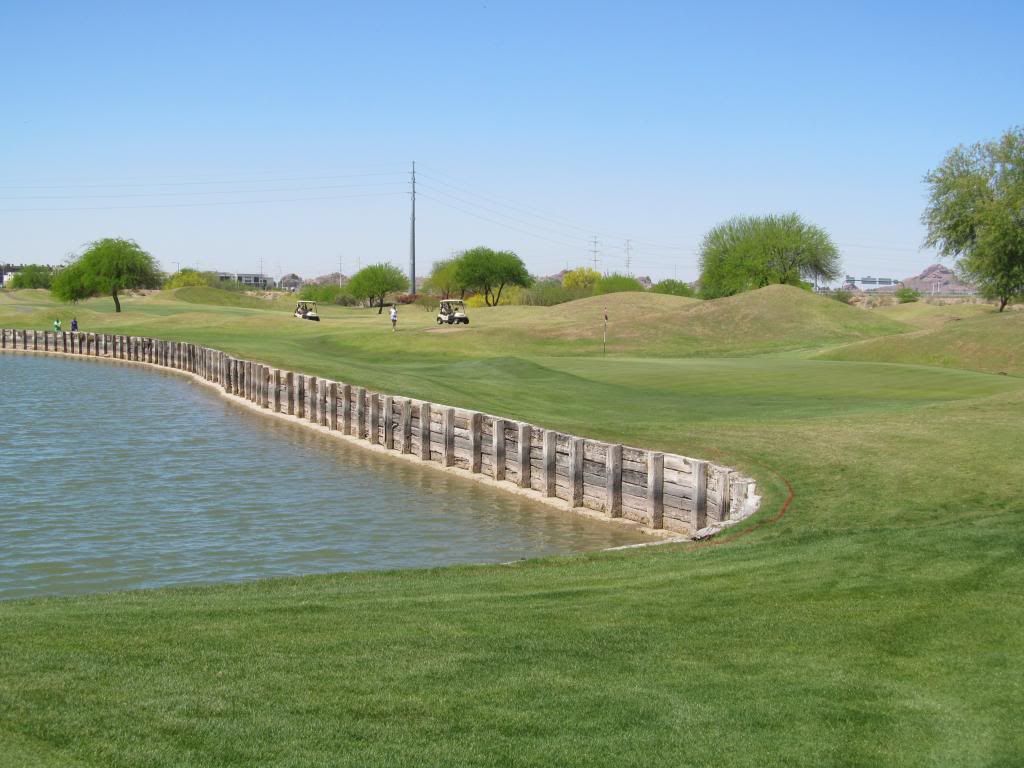 #16, par 3. 248/217“The finishing holes are difficult in the Dye tradition—the par-3 16th is borderline impossible.”
#16, par 3. 248/217“The finishing holes are difficult in the Dye tradition—the par-3 16th is borderline impossible.” - Tom Doak, The Condfidential Guide
Well … yeah. From the 248 tee, especially. And how about this hole at 217 for guys playing a course under 6300 yards? At least there’s plenty of room left.
But from a more manageable tee, this hole is not bad. The green is in three sections, more or less L shaped, and divided by ridges. Prevailing wind is from the right, so it’s moving your ball away from the water, which is nice, I guess, although the shape of the hole makes a fade seem preferrable.
Back right hole locations are just crazy (over the bunker, toward the tree). You could lay up on this hole and be wise to not even try to chip it back there. The best way to play that shot is to take plenty of club and aim at the bunker left. There’s lots of short grass beyond the bunker, so it’s a relatively straightforward chip. If you miss it right at all you may be putting.
Middle hole locations are probably the easiest, though not if you miss left of the bunker. Front locations bring the water to the right and also in front into play. That’s a dicey shot from 200+ yards.
Just a tough, tough Dye par 3. And how about that scenic backdrop!
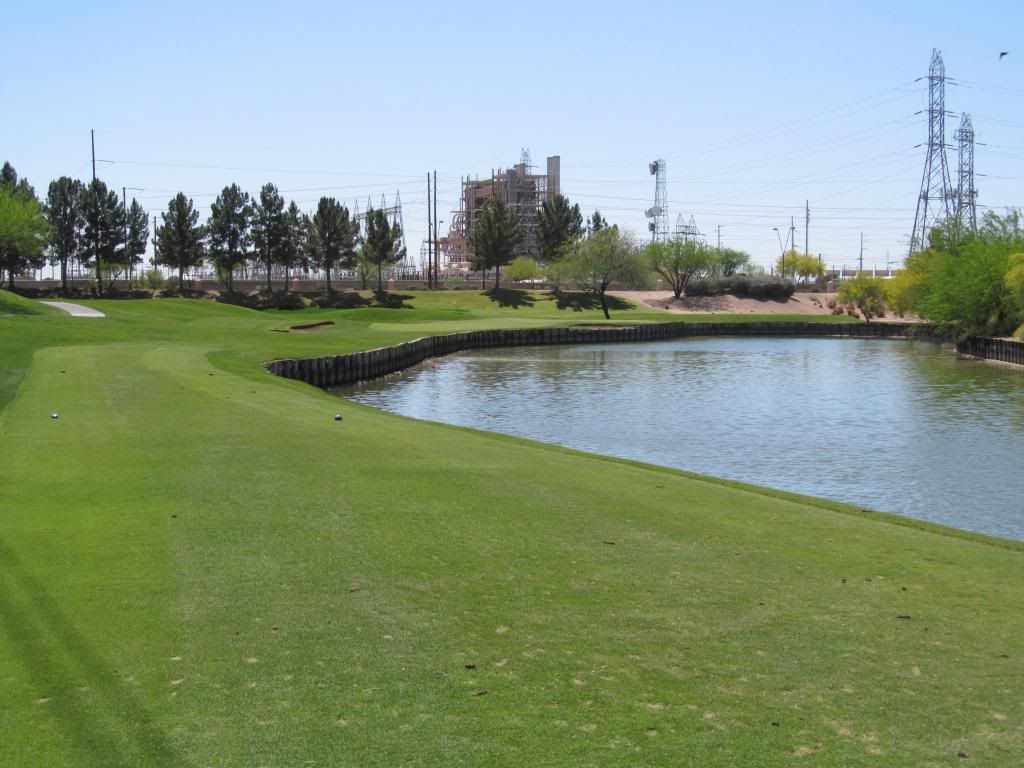
From the left side of the green:
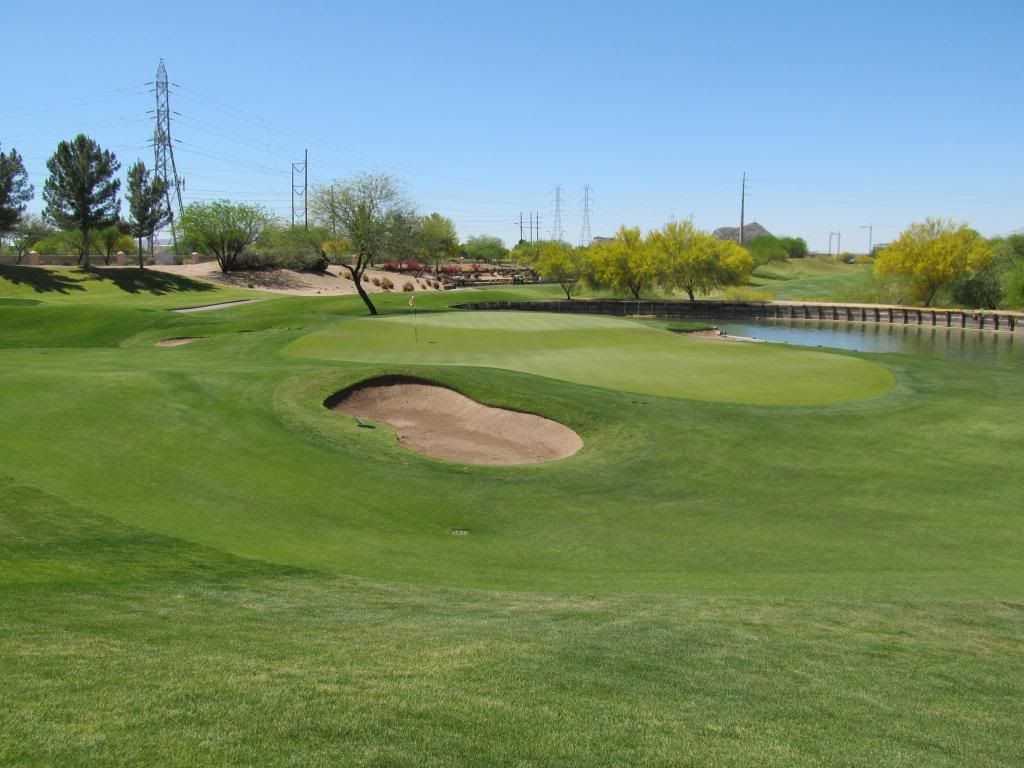 #17, par 5. 581/537
#17, par 5. 581/537This is a long par 5, uphill and into the prevailing wind.
Tee shot:
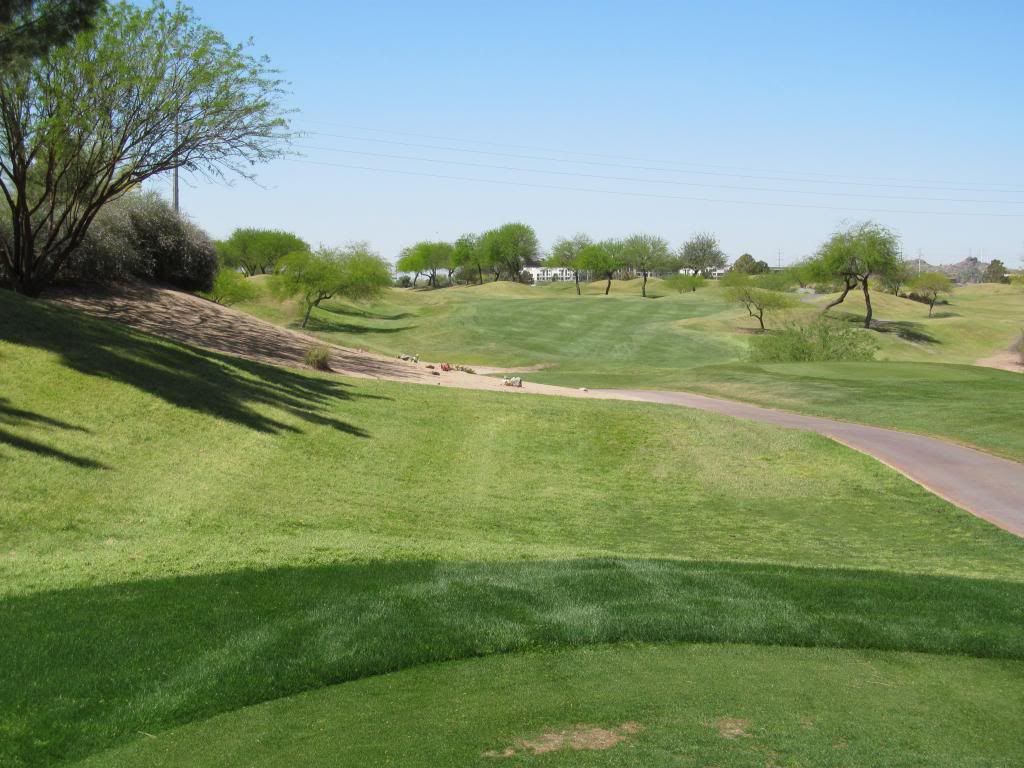
From the tee shot landing area. The green is more or less over the big bunker, which is some 100 yards shot of the green. Depending on your tee shot, you can play short of the bunker and have a blind third, or try to play long down to the left of the bunker. That opens up your third shit, but requires two really well struck shots.
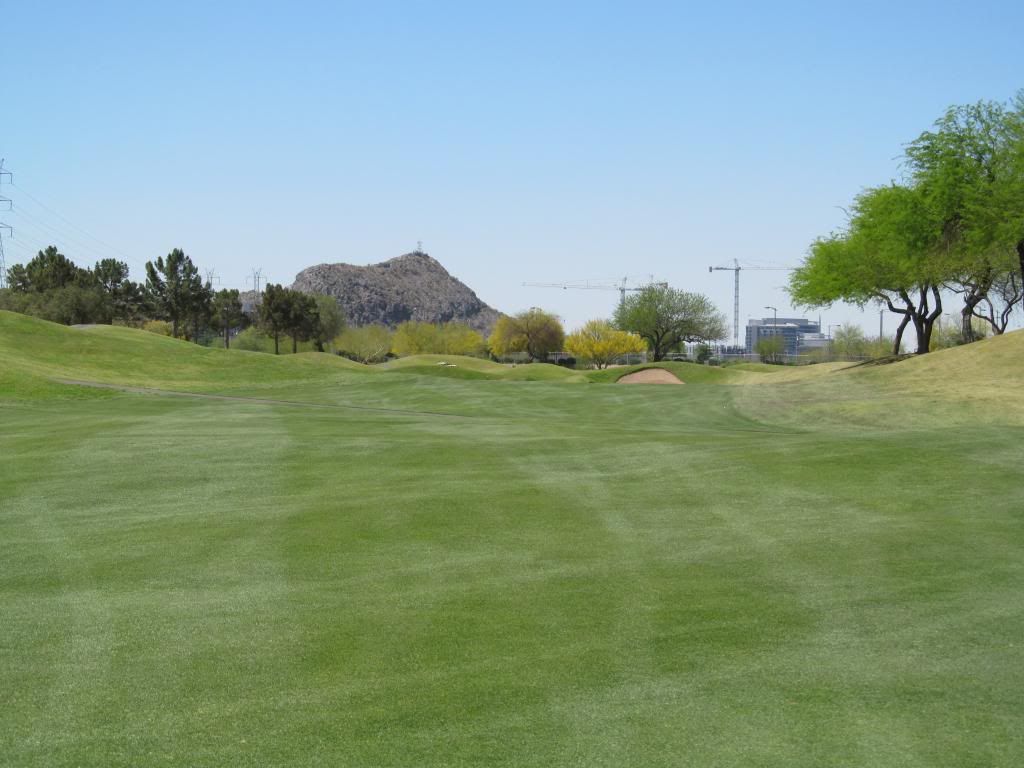
Short of that bunker:
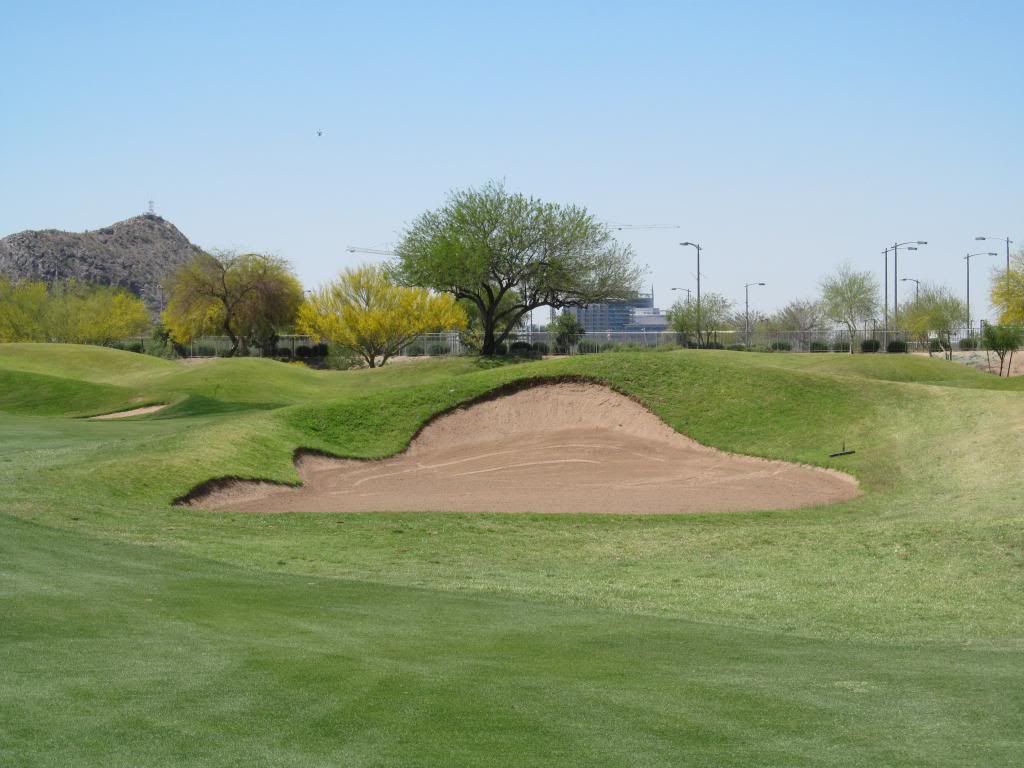
Left of the bunker:
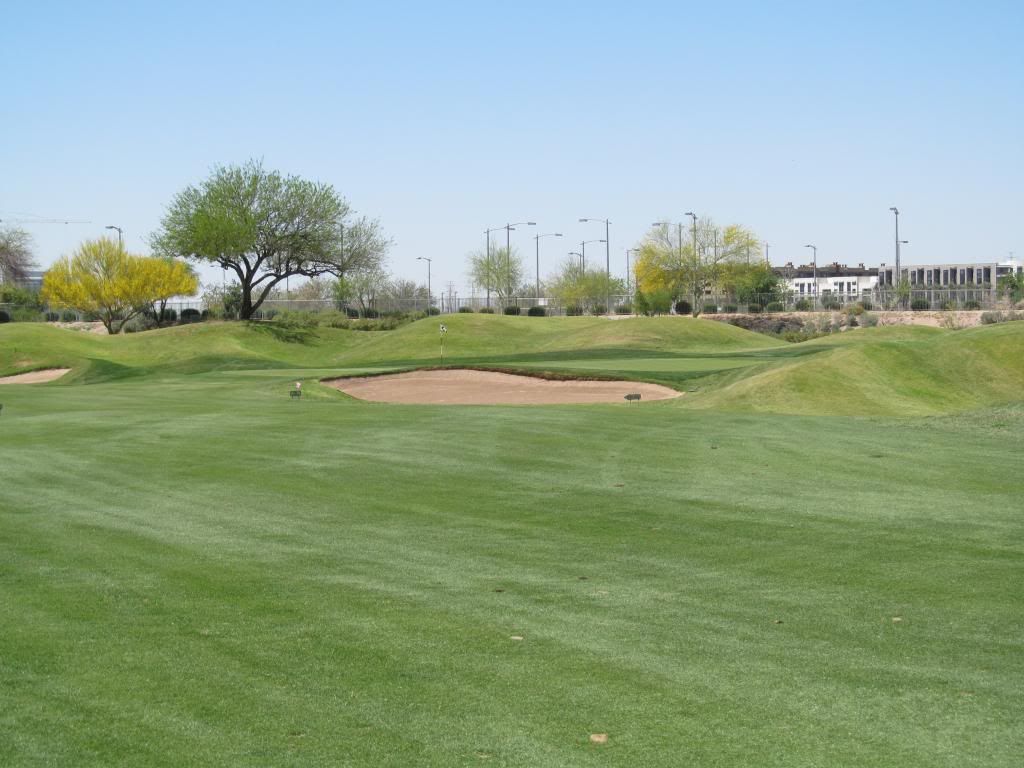
I don’t have a picture of it, but also tricky here is that the green runs away.
#18, par 4. 471/424.Back across the road to the trademark Dye finishing hole. Water left, mounds and bunkers right. Long and into the wind. Par here is always well earned.
Tee view:
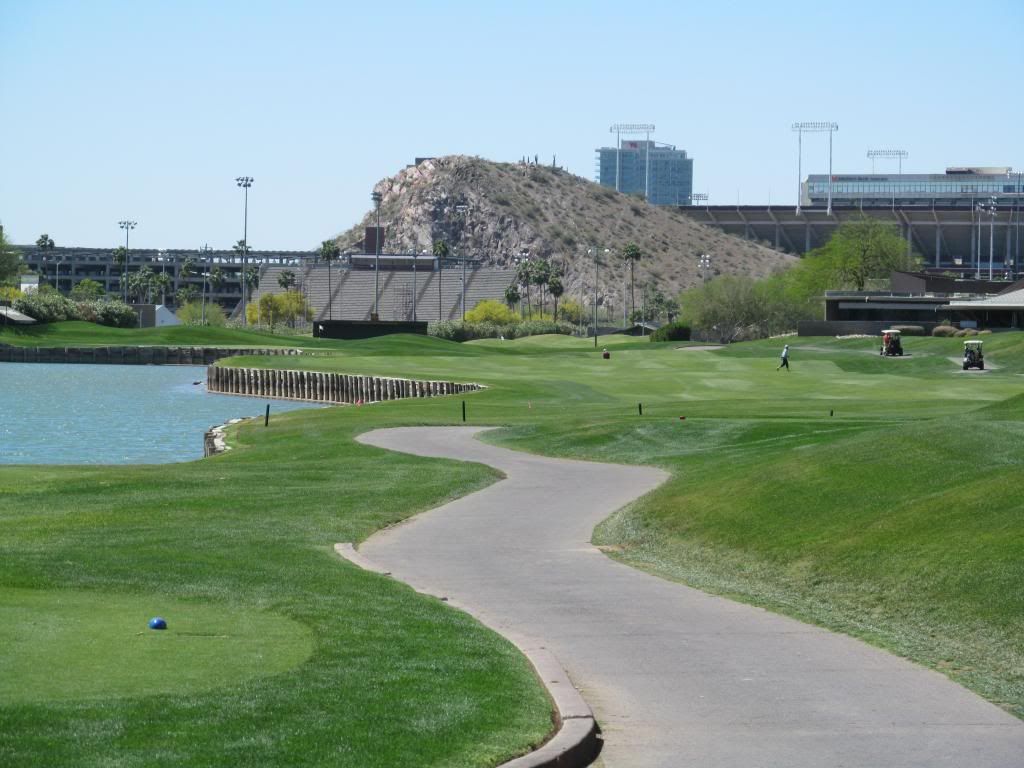
18 shares its teeing area with #9, but plays much longer because instead of the green resting next to the lake, it wraps around the back side. For all hut the most front hole locations, your second shot (to the green) will have to carry the water.
The green seen here from about 70 yards out in the right rough. Note how the fairway up here by the green does not extend all the way to the lake. If you chose to play safe, Dye asks you to play well safe. A shot toward the right front that doesn’t get there will either find water, or undulating swales of rough.
